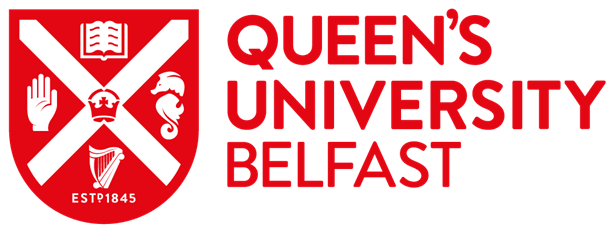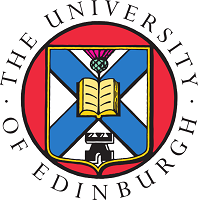GroundsWell Explorers: Inspiring the next generation of researchers
Dr Niamh O’Kane details the journey of partnering with a community organisation to engage young people and co-create a team of superheroes dedicated to improving green and blue space for health
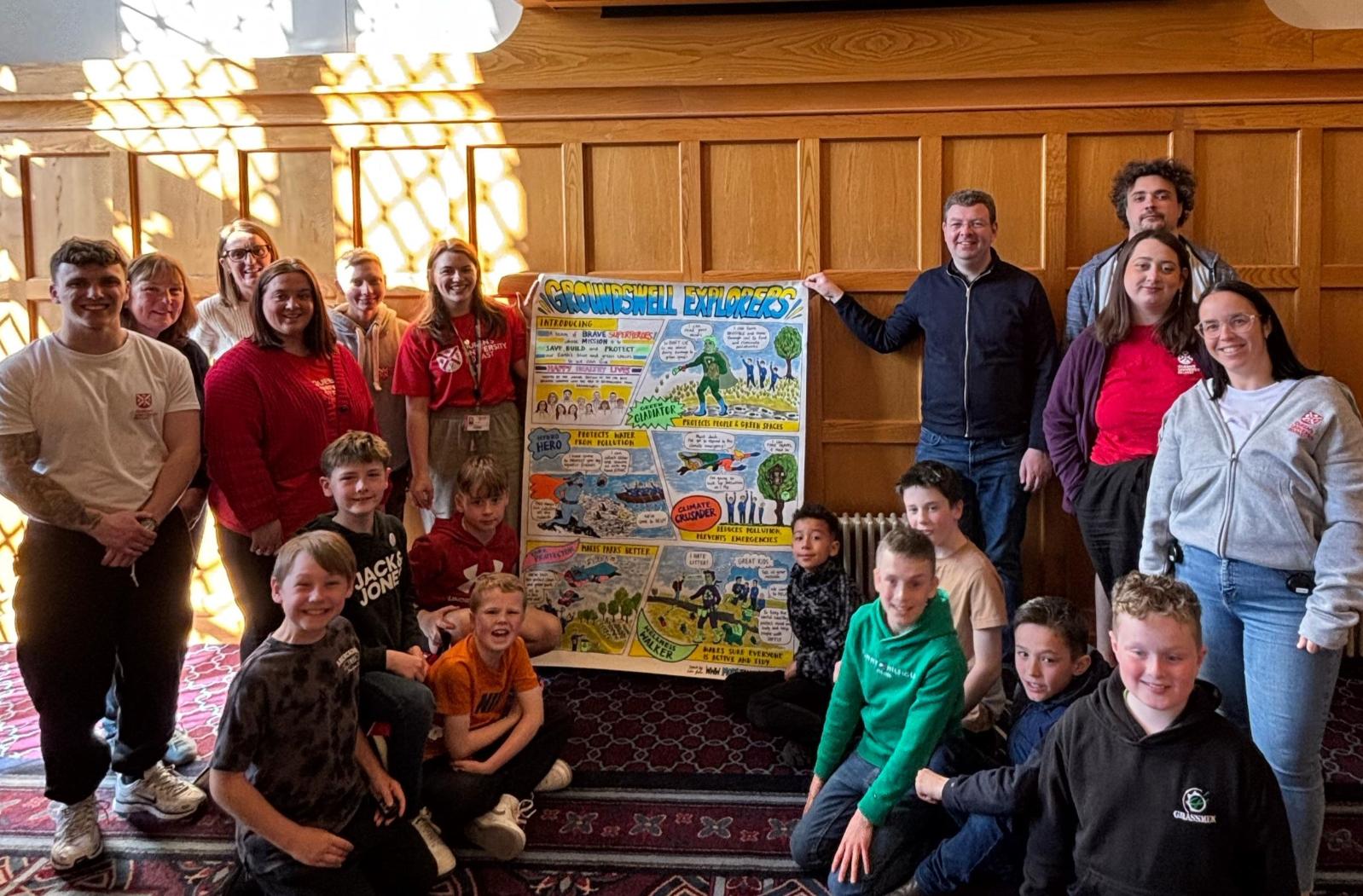
Community Buddies
Our story begins in autumn 2023, when I was invited to participate in the British Science Association's Community Buddies programme. The programme connects Community Leaders with local researchers to spark new ideas and drive innovative community-led science engagement. It aims to: create greater empathy and understanding between researchers and communities; support researchers and communities to create authentic, mutually beneficial relationships with equal sharing of power; and increase the skills and capabilities of both researchers and communities to engage with each other. I was partnered with Robert Whan, a community leader working with the Boys' Brigade in Spa (near Ballynahinch) in Northern Ireland. The Community Buddies programme had two phases, i) the “relational” phase, and ii) the “grant” phase.
Developing a relationship
During the relational phase, Robert and I received training from the British Science Association in how to use a relational approach to build a relationship, learn about each other, and discover mutual interests. The British Science Association advocated for this relational approach, rather than an agenda-driven approach, to encourage more meaningful science engagement projects and long-lasting relationships between communities and researchers. We also travelled to London for a full day of in-person training where we got to meet all of the other Community Buddy pairs, spanning across the United Kingdom. You can find a list of the 2023-24 community buddies here.
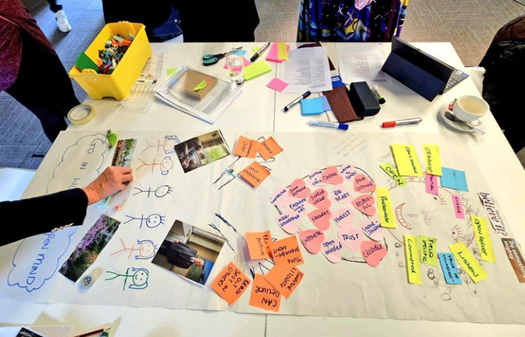
Robert and I met a number of times during this relational phase, to discuss our roles as researcher and community leader, to discuss our passions, share stories, and explore potential overlap of interests on which we could build ideas for a project. As Robert worked with the Boy’s Brigade, we identified some of the themes within GroundsWell that could be of particular interest to a group of boys aged 9-11. We decided we would design a programme of activities around green and blue space, climate, and health, that encouraged the boys to be curious about the world around them and empower them to become researchers of their natural and built environment.
Applying for funding
During the grant phase, Robert and I worked together to co-develop a grant proposal to fund our idea for a programme of activities. We developed and shaped our idea to ensure we had a programme of activities that would be co-beneficial for both me and Robert. What this looked like in reality was me ensuring we were using themes and ideas from GroundsWell, and Robert ensuring that the ideas we developed would excite, encourage and empower the boys from the Boy’s Brigade. We learned from each other during this process, which differed entirely from both of our usual approaches to applying for funding. One tip I received from Robert when we were developing our programme was the idea that, when planning activities for 9-11year old boys, assume that you will only hold their attention for as many minutes as their age. For example, for 10-year-olds, after 10 minutes of one activity, you may want to shake it up and do something different. This would prove to be true and would be a tip I would share with my colleagues and one we will remember when planning future activities with young people. Robert and I were successful in the grant phase, receiving £4000 to fund our project from the British Science Association.
Researchers visit Boy's Brigade
From October 2024 to March 2025, a team of GroundsWell researchers made three visits to the Boy’s Brigade group in Spa. Our GroundsWell team was made up of myself, Sophie Jones, Claire Cleland, Sophie Glover, Hannah Thompson, Jacob Illyuk and Shay Mullineaux.

During our first visit, we focused on introductions – introducing ourselves, GroundsWell, and the themes within it. We played “researcher bingo”, a game of fact-finding, and speed-true-or-false. In our second session, we wanted to explore the themes of green and blue space, climate, and health, but we wanted to ensure that we led the discussion in a way which the boys would find interesting (and where we wouldn’t lose their attention after 10 minutes!) As a result, I developed an idea for one big activity, in which we would get into groups with the boys and design our own superheroes.
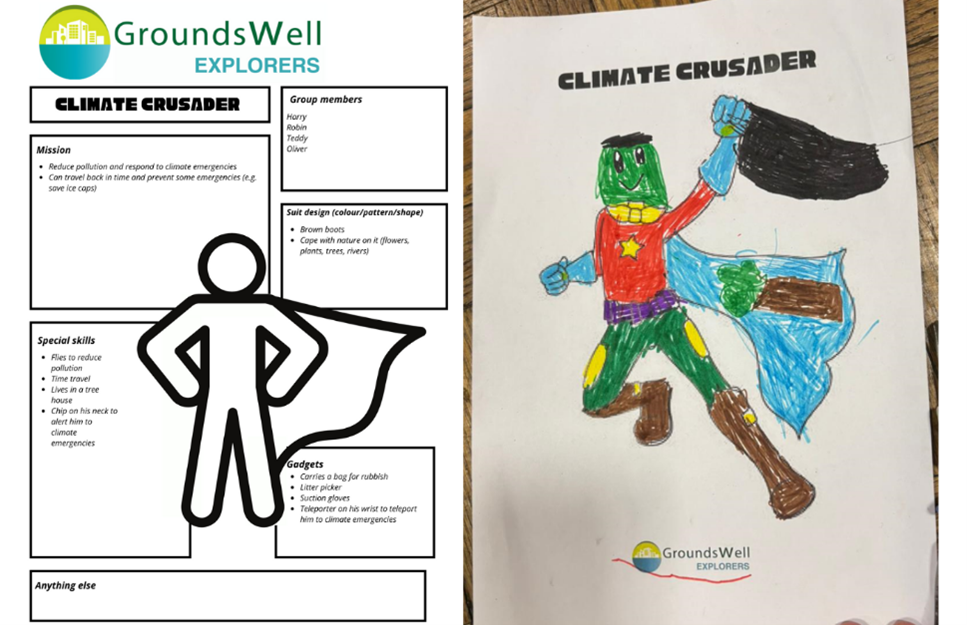
These superheroes – the GroundsWell Explorers – would be a team of heroes dedicated to saving, building, and protecting our Earth’s green and blue spaces, so that we can live happy, healthy lives. We provided only the names of the superheroes, and from there, the boys designed a team of heroes with impressive costumes and magical superpowers to help improve our environment. We took what the boys developed and worked with a professional artist to design a comic featuring our GroundsWell explorers, and those that created them.
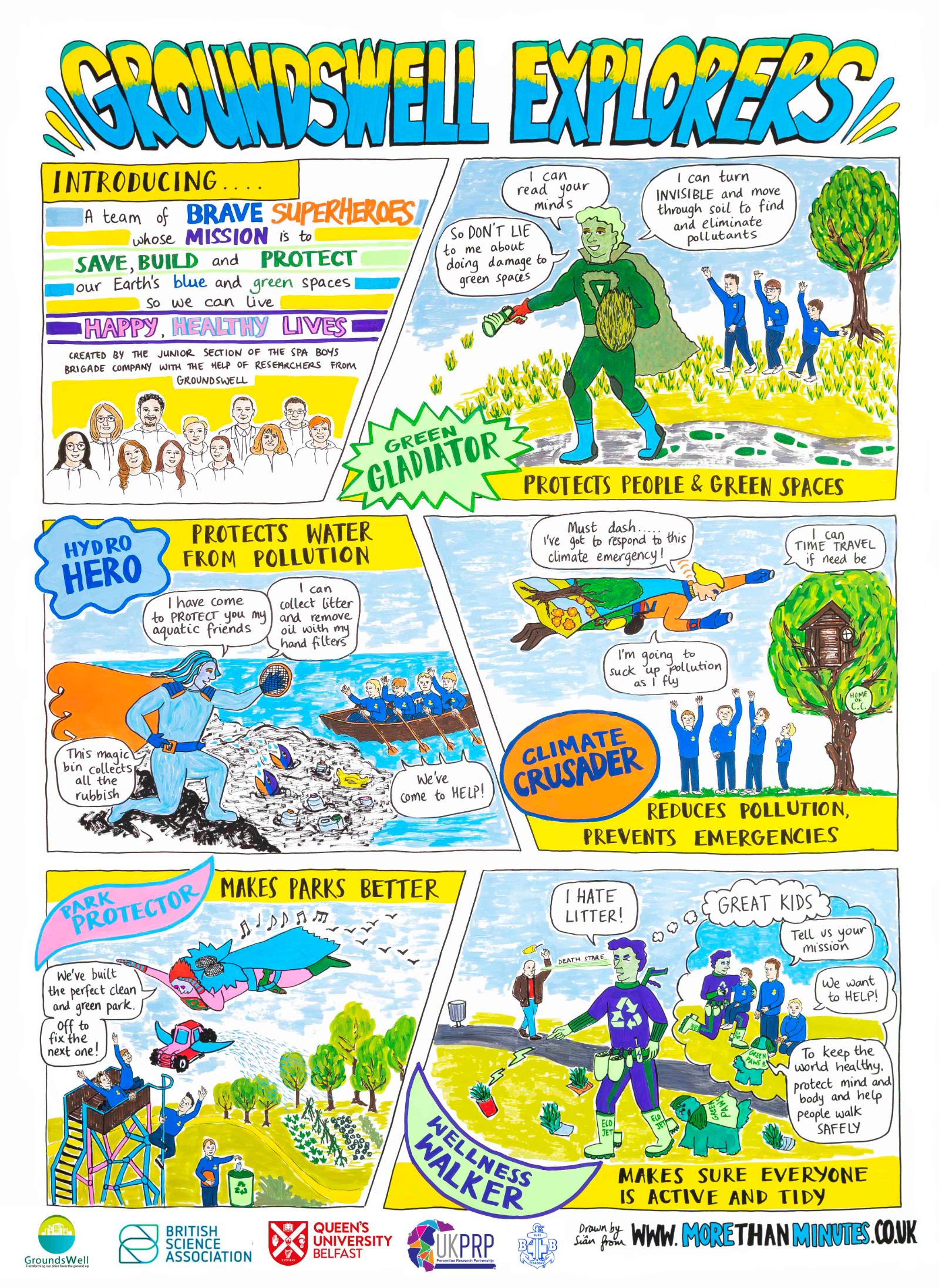
During our final visit to the boys, we brought with us special research mission booklets for the boys to complete at home, at school, or in their own time. Each boy had a research question to answer, based off their superhero team, and we worked with the groups to come up with ideas for research activities. Some would go on to survey their friends and families, some would observe their environment, and others would draw pictures and graphs to illustrate their findings. We didn’t collect completed booklets at the end of the programme, instead, we wanted to instil the idea that the boys could conduct research on their environment any time they felt like it.
One of our research mission booklets
A field trip to Queen’s
Our programme culminated in the boys coming to visit us in Queen’s University Belfast. On Saturday 5th April, we hosted the Boy’s Brigade and their leaders in the beautiful Lanyon Building. Our day was split into four sessions: 1) a research bazaar, 2) an observational walk, 3) food, and 4) reflections and prizegiving.
In our research bazaar, our GroundsWell researchers demonstrated various skills at different tables. From pedometers for measuring physical activity, to drawing systems maps to illustrate our findings, and using arts and crafts to design DNA structures, our researchers highlighted different ways we can collect and share data.
For our observational walk, the boys donned their high-vis jackets and clipboards, and we all went to explore Belfast’s Botanic Gardens and the McClay library. We designed observation sheets for the boys, to guide them in observing the environment around them and collecting and synthesising this data. We received a special tour of the McClay library from Robert, where we got to see behind-the-scenes machines and the CS Lewis Room. We returned to our room where we had a hot lunch and chatted over food about what we saw together.
Our GroundsWell Botanic Park observation sheet
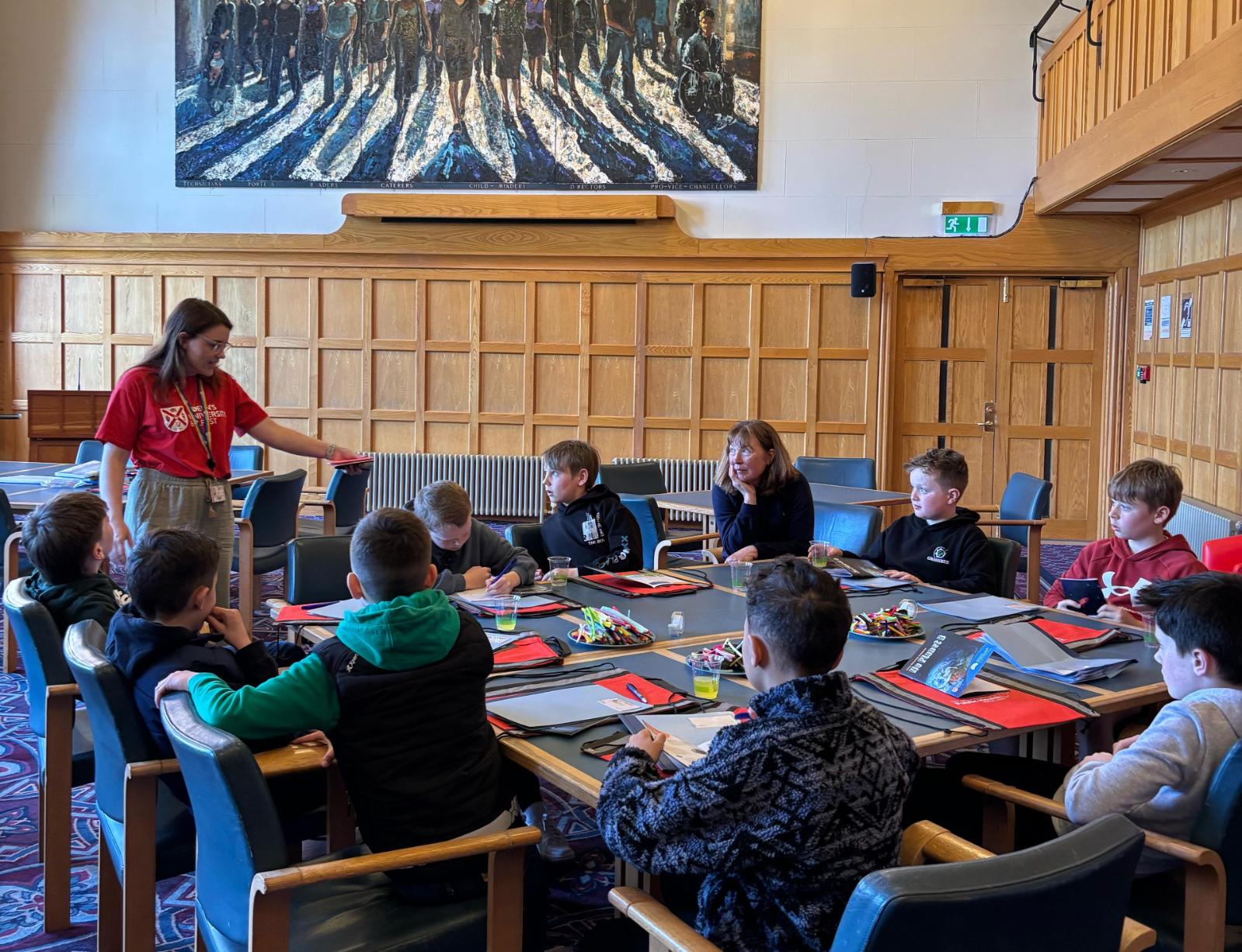
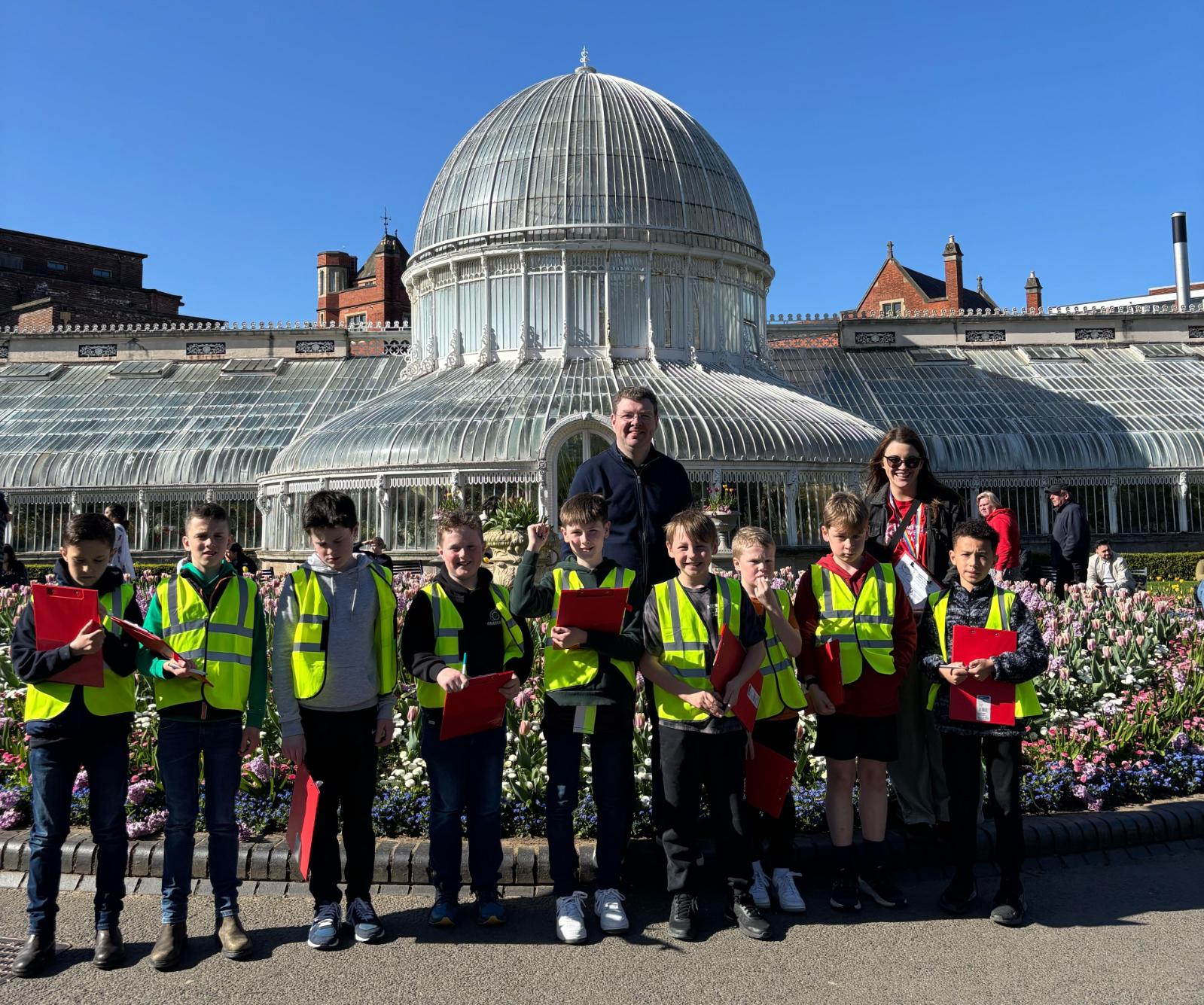
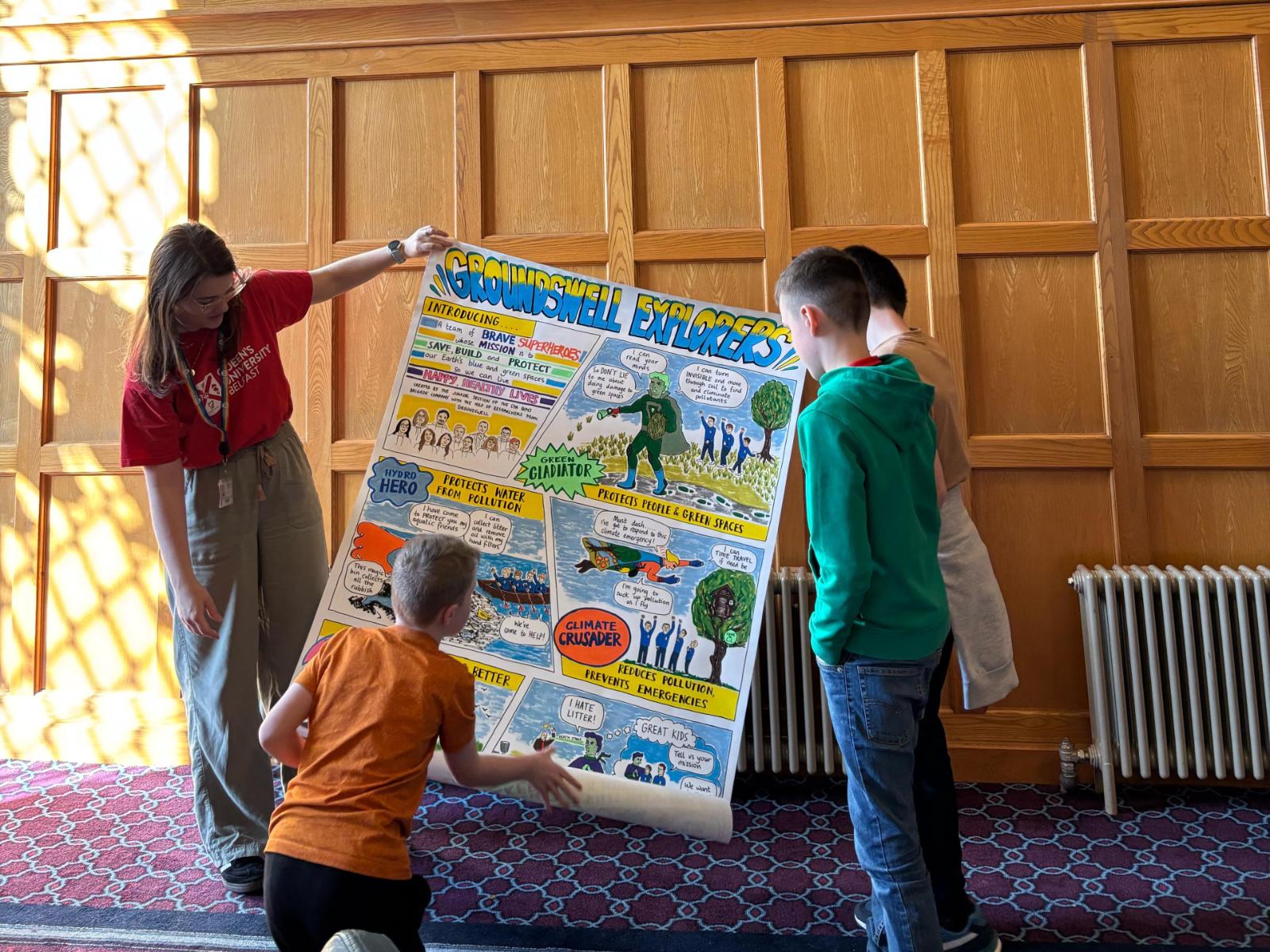
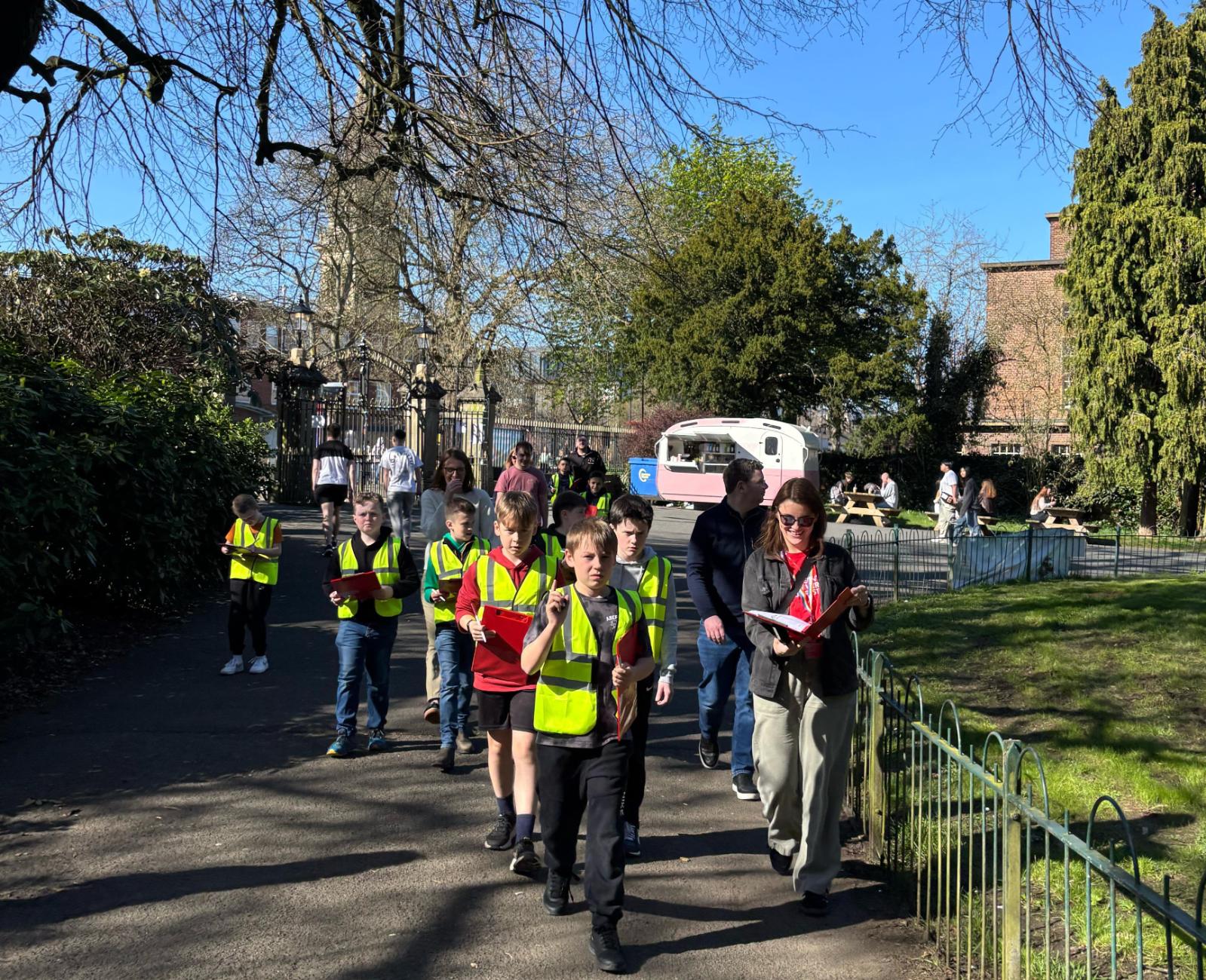
In our final session of the day, Robert and I led the boys, leaders, and researchers in a reflection of the programme. We discussed what we’d learned, what we enjoyed, and what we’ll take away with us from the programme. The boys all received a copy of their GroundsWell Explorer comic, a certificate from GroundsWell, as well as a special Boy’s Brigade badge for completing the programme. By the end of the day (and the programme) we were all sad to depart, and the boys were asking if we could do the programme again with them next year.
Reflecting on the programme
Partnership working, co-development, and public engagement are not foreign concepts to me. In fact, they are some of the key principles underpinning a lot of the work I do with GroundsWell, both as a research fellow and as one of the sci com/impact leads. However, this programme was particularly meaningful and rewarding for several reasons.
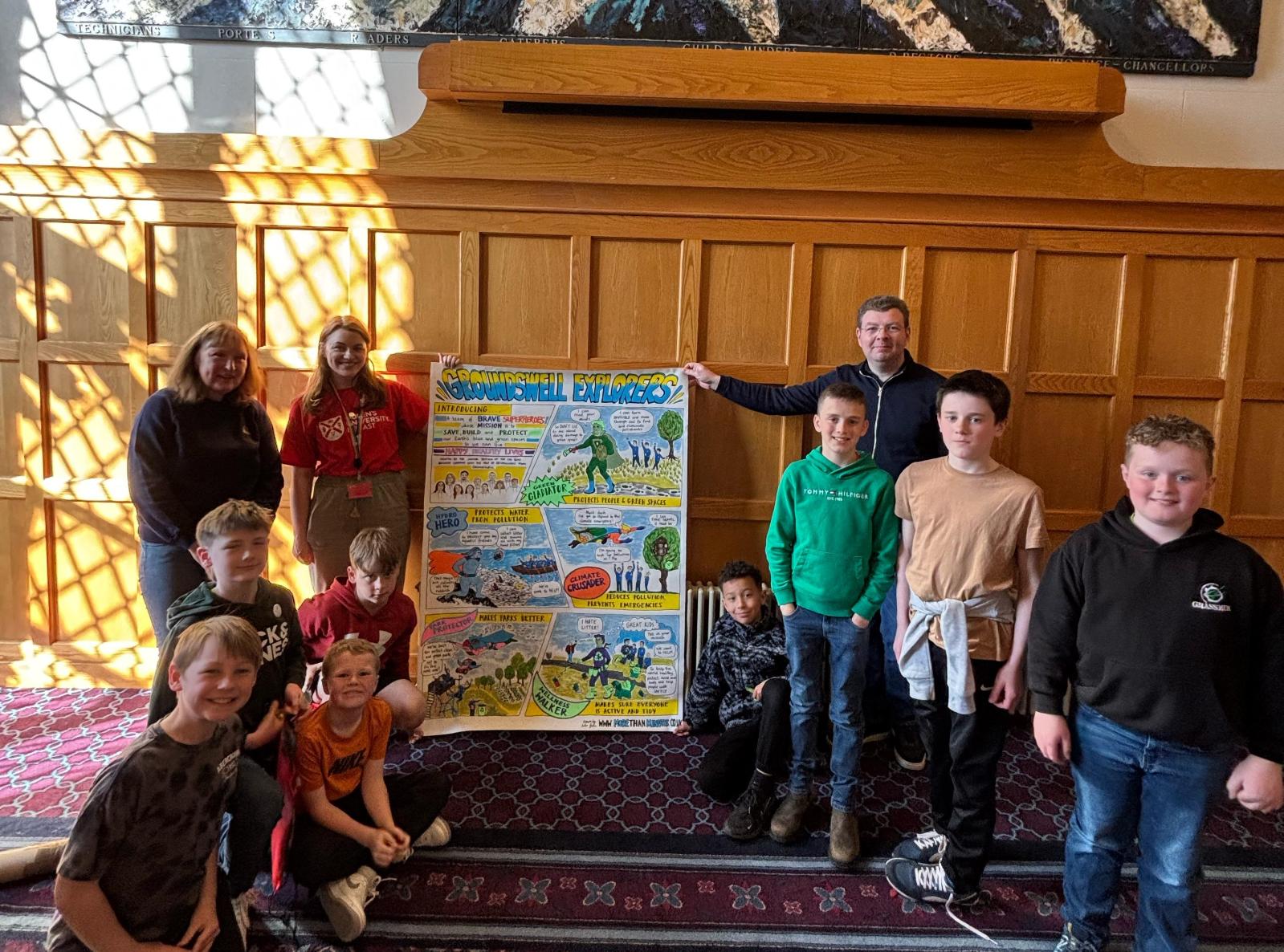
The focus on a relational approach rather than an agenda-driven approach was a valuable takeaway. So often, as academics, we are focused on the bottom-line, the outcome, or the final output; whether this be data collection, a journal article, or a public engagement event. However, I’ve learned that the “messy middle” where we share ideas, spit ball, and brainstorm is often where we learn the most about each other, and gain the most insight from other people. Robert and I developed a relationship over the course of a year and a half, we co-designed an idea and saw it through to the end together. I think this really demonstrated for me how beneficial it is to be working with partners outside of academia, from the very beginning, and working with them throughout.
It was wonderful for us to be able to present Robert, the leaders and the boys with the comic of the GroundsWell explorers – a large art piece which they can (literally) see themselves in and share with their community to further encourage others to think about the link between where we live and our health. This art piece is also a valuable resource for us as a research team as it is an example of the type of innovative science communication we aim to create in GroundsWell, and a lovely visual representation of all of the hard work that went into the programme.
Finally, whilst we set out to empower the young boys to be curious about the world around them and how it impacts their health, and to encourage them to think about research, the boys also reinvigorated us as researchers. We better understand how to make our work relevant and interesting, how to think creatively and outside-the-box when approaching public engagement, and more importantly, how to not take ourselves too seriously. We hope that, just as we go forward as researchers and advance understandings of the link between our health and the environment, our young GroundsWell Explorers will go out and do the same.
Media
niamh.okane@qub.ac.uk


